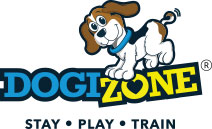What to Expect at a Dog Agility Class
Canine agility classes can strengthen the bond between a dog and his handler by establishing a certain level of respect between the two. This training also keeps your pet in good physical condition, which can extend his life. Before your dog enters beginner agility training, they will need to lay the foundation for course success through communication skills, and within introductory classes, they will gain an understanding of:
- Basic Commands
- Impulse Control
- Positional Cues
- Sends and Recalls
- How to Focus with Distractions
Beginner Dog Agility Classes
Before enrolling for dog agility classes, you’ll need to decide who will be the handler for your dog, you or a hired professional. Your choice will likely depend on whether you want your pet to compete professionally or if you just want to spend some time with your buddy.
Dogs with little or no prior obstacle training take placement in beginner courses, where the groundwork is laid to refine obedience skills essential for classes. This is the time when a specific handling system will be established to help pets navigate the courses. Your pet will become familiar with all of the obstacles and gradually work up to a set level of proficiency before advancing to intermediate training. Agility course obstacles include:
- A-Frames
- Crossovers
- Teeter-totters
- Tunnels/Collapsed Tunnels
- Jumps
- Weave Poles
- Tire Jumps and Navigation
Intermediate Agility Training
Once your dog meets the standards necessary to begin the next level of training, they will start intermediate classes to fine tune their course skills. By now, your pet is fluent on all equipment, is able to run the course completely off leash, and has a reliable recall. Those who plan to compete, will want to continue with advanced and competition dog agility training, while others are ready to show off their skills with a visit to the dog park.
Etiquette During Dog Agility Training
There are several common courtesy rules of decorum to acknowledge during classes, and you’ll catch on quickly by watching more experienced handlers. Here are the top three rules of etiquette.
- Be ready for your turn, and only begin after the previous runner is back on leash.
- Help other handlers retrieve their leashes to save time.
- Assist with course height adjustments, changes, and setup alterations.
Dogs and handlers with serious aspirations to enter and win agility competitions will also want to consider private lessons from Canine Obedience Unlimited, a leading source for experienced Maryland dog training.
